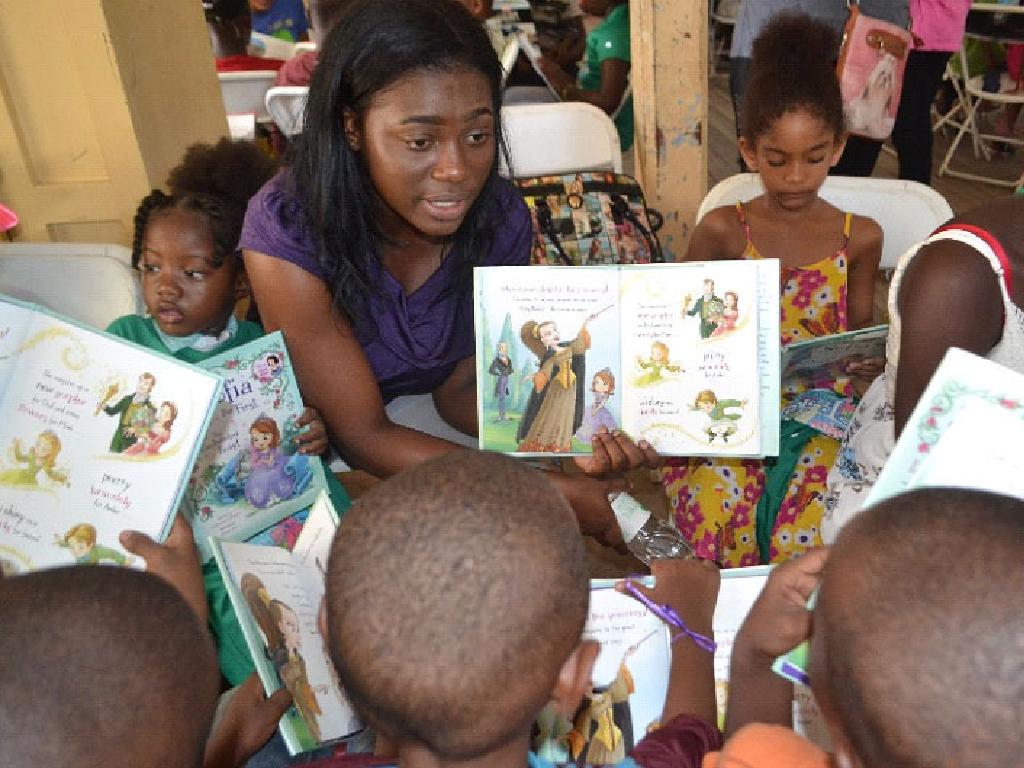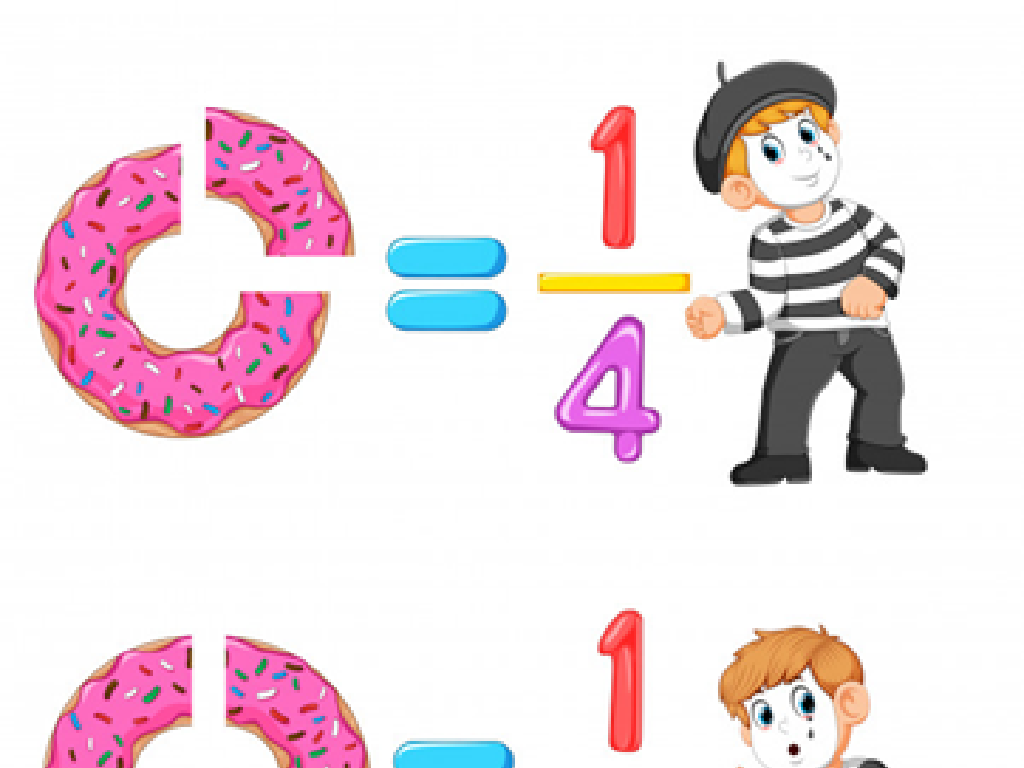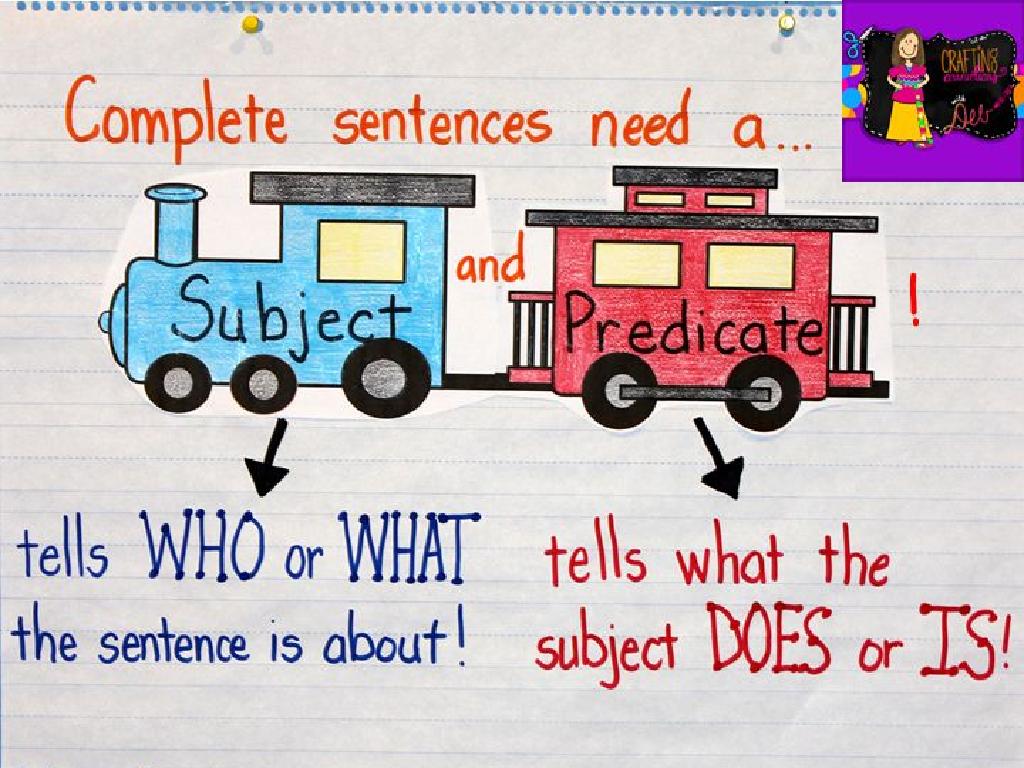Pronoun-Verb Contractions
Subject: Language arts
Grade: Sixth grade
Topic: Contractions
Please LOG IN to download the presentation. Access is available to registered users only.
View More Content
Exploring Pronoun-Verb Contractions
– Understanding contractions
– A contraction is a shortened form of words like ‘I am’ to ‘I’m’
– Purpose of contractions in English
– They make speaking & writing quicker and more informal
– Examples of pronoun-verb contractions
– ‘She’ll’ from ‘she will’, ‘we’re’ from ‘we are’
– Practice with common contractions
– ‘Can’t’ from ‘cannot’, ‘doesn’t’ from ‘does not’
|
This slide introduces the concept of contractions, specifically focusing on pronoun-verb contractions, to the sixth-grade language arts class. Begin by explaining that contractions are a way to shorten words to make sentences easier to say and write. Emphasize that while contractions are common in spoken English and informal writing, they are less common in formal writing. Provide examples of common contractions and encourage students to think of others. As an activity, students can work in pairs to come up with sentences using different contractions. This will help them understand how contractions are formed and used in everyday language.
Understanding Pronouns and Contractions
– Review of pronouns
– Pronouns take the place of nouns
– Personal pronouns: I, you, he, she, it, we, they
– Used to refer to people or things
– Possessive pronouns: my, your, his, her, its, our, their
– Show ownership or belonging
– Pronoun-verb contractions
– Shortened form combining pronoun and verb e.g., I’m, you’re, he’s
|
Begin with a quick review of pronouns, ensuring students recall that pronouns are used in place of nouns to avoid repetition and simplify sentences. Highlight personal pronouns, which are used to refer to the speaker, the person spoken to, or the person or thing spoken about. Then, discuss possessive pronouns, which indicate ownership. Finally, introduce pronoun-verb contractions, which are commonly used in everyday speech and writing to combine a pronoun with a verb in a shortened form. Provide examples like ‘I’m’ for ‘I am,’ ‘you’re’ for ‘you are,’ and ‘he’s’ for ‘he is.’ Encourage students to come up with their own examples and understand the importance of using contractions correctly in their writing.
Understanding Verbs and Their Roles
– Define what a verb is
– A verb is a word that expresses an action or a state of being.
– Verbs in sentence examples
– ‘She runs daily’ – ‘runs’ is the verb showing action.
– Differentiate action vs. state verbs
– Action verbs express physical or mental action. State verbs express a condition.
– Practice identifying verbs
|
This slide aims to introduce students to the concept of verbs as fundamental components of sentences. Begin by defining a verb and its function in a sentence. Provide clear examples of verbs within the context of sentences to illustrate their use. Highlight the difference between action verbs, which show physical or mental actions, and state of being verbs, which describe conditions or states. Engage the class with practice exercises where they identify verbs in sentences and categorize them as action or state of being. This foundational knowledge will be crucial for understanding pronoun-verb contractions in subsequent lessons.
Understanding Pronoun-Verb Contractions
– Definition of pronoun-verb contractions
– A shortened form of a pronoun and verb combined, like ‘I’m’ for ‘I am’
– Forming contractions with pronouns and verbs
– Combine a pronoun like ‘she’ with a verb like ‘will’ to make ‘she’ll’
– Role of apostrophes in contractions
– Apostrophes replace omitted letters, such as ‘o’ in ‘do not’ to ‘don’t’
– Examples of common contractions
– ‘He’s’ for ‘he is’, ‘we’re’ for ‘we are’, ‘they’ve’ for ‘they have’
|
This slide introduces pronoun-verb contractions, which are commonly used in everyday English to combine a pronoun with a verb in a shortened form. It’s crucial to explain that contractions make speech and writing more informal and conversational. Emphasize the correct placement of apostrophes, which is a common area of confusion. Provide examples and have students create their own contractions from full pronoun-verb phrases. Encourage them to identify contractions in their reading and use them in their writing, while also understanding when it’s appropriate to use the non-contracted forms in formal writing.
Exploring Pronoun-Verb Contractions
– ‘I am’ becomes ‘I’m’
– ‘You are’ turns into ‘You’re’
– ‘He is’ contracts to ‘He’s’
– ‘They will’ shortens to ‘They’ll’
|
This slide introduces students to pronoun-verb contractions, which are commonly used in everyday English to combine a pronoun with a verb in a shortened form. These contractions make speaking and writing more natural and fluent. It’s important for students to recognize and use these contractions correctly, especially in informal writing and speaking. During the lesson, provide additional examples and have students practice by writing sentences using each contraction. Encourage them to listen for these contractions in conversations and identify them in their reading to reinforce their understanding.
Pronoun-Verb Contractions: Rules and Usage
– When to use contractions
– Use in informal speech & writing, like stories or friendly letters
– Formal vs. informal writing
– Avoid in formal essays, official documents, or academic papers
– Avoiding contraction mistakes
– Common errors: mixing up ‘it’s’ (it is) and ‘its’ (possessive form)
|
This slide aims to educate sixth-grade students on the appropriate use of pronoun-verb contractions in their writing. It’s crucial to highlight the difference between informal and formal contexts, emphasizing that contractions are generally acceptable in casual communication but should be avoided in formal writing. Additionally, address common mistakes, such as confusing ‘it’s’ with ‘its,’ and provide tips on how to remember the correct usage. Encourage students to practice by rewriting sentences with and without contractions to see the difference in tone and formality.
Practice Time: Mastering Pronoun-Verb Contractions
– Spot contractions in given sentences
– Look for words like ‘I’m’, ‘she’s’, ‘we’re’
– Craft sentences with contractions
– Use ‘I’ll’, ‘you’d’, ‘he’ll’ in your own examples
– Understand pronoun-verb agreement
– Ensure the pronoun and verb form a correct contraction
– Share your sentences with the class
|
This slide is for a class activity focused on identifying and using pronoun-verb contractions. Students should first practice recognizing contractions within example sentences provided by the teacher. Then, they will create their own sentences using contractions, ensuring they maintain proper pronoun-verb agreement. For example, ‘I am’ becomes ‘I’m’, and ‘they would’ becomes ‘they’d’. Encourage creativity and correct usage. As an extension, students can work in pairs to quiz each other or use their sentences to create a short story. This activity will help solidify their understanding of how contractions are formed and used in everyday language.
Class Activity: Crafting Contractions
– Pair up and write a dialogue
– Use pronoun-verb contractions
– Examples: I’m, you’re, he’s, we’ve
– Present your dialogue to the class
– Class votes on creative contractions
|
This activity is designed to reinforce the students’ understanding of pronoun-verb contractions through a creative and engaging exercise. Have the students pair up and write a short dialogue, ensuring they use as many pronoun-verb contractions as possible. Encourage creativity in their dialogues, perhaps by setting up a fun scenario or theme. After writing, each pair will present their dialogue to the class. Following the presentations, conduct a class vote to choose the dialogue that used contractions most creatively. This will not only help students practice using contractions but also improve their public speaking and listening skills. Possible variations of the activity could include writing a short story, creating a comic strip, or even composing a song using contractions.
Wrapping Up: Pronoun-Verb Contractions
– Recap on pronoun-verb contractions
– Importance of contractions in writing
– They make sentences shorter and more natural
– Homework: Craft a short story
– Use your imagination and the contractions we learned
– Include 10 pronoun-verb contractions
– Examples: I’m, you’re, she’s, we’ve
|
As we conclude today’s lesson, remind students of the key points about pronoun-verb contractions. Emphasize their role in making writing and speech more fluid and conversational. For homework, students should write a short story that includes at least 10 different pronoun-verb contractions, demonstrating their understanding of the lesson. Encourage creativity and the use of a variety of contractions. This exercise will help reinforce their knowledge and give them practical writing experience. In the next class, be prepared to discuss some of the stories and the contractions used.





